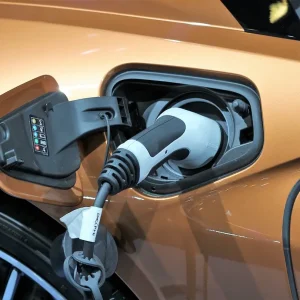Government legislation takes some keeping up with, and few parts of it are changing more rapidly than tax and grants for plug-in vehicles.
It’s common knowledge that the lower your emissions, the cheaper your tax bills, both for drivers and for businesses, which is where full-electric vehicles and plug-in hybrids or range-extenders make the savings for fleets – and the grant to take the edge off the list price doesn’t hurt either. Do the sums and if your fleet fits the usage profile, plug-ins can be a tremendously cheap option.
However, the appetite for low-emitting vehicles is such that tax revenue isn’t what it once was, causing chancellor George Osborne to increase rates across the board, and with take-up of ultra-low emissions vehicles well and truly on the rise, the grant has changed to remain sustainable. Fleets with the right usage profile can still make big savings from operating plug-in vehicles, but it pays to be aware of the discounts and how they’re developing in order to make the most of them.
At present, the plug-in van grant remains £8000 and there are no publicised plans to alter it – but the landscape has changed for plug-in cars. On 1 March 2016, the chancellor did away with the flat £5000 discount and introduced a new, graded scheme of either £4500 or £2500 depending on the car’s emissions and its electric-only range (see ‘Categories and discounts’, left, for full details).
The move led to a spike in plug-in vehicle registrations as fleets sought to cash-in on the bigger discount prior to the cut-off date, according to Michael O’Shea, head of Volkswagen Fleet: “We’ve seen a push in recent months and an increased focus on ‘if I order the car now will I get the [£5000] grant?’, and a lot of customers have found themselves in a situation where they’ve encouraged drivers looking to purchase a hybrid vehicle to do so earlier to ensure they’re still eligible.
“It’s early days in terms of what the impact is around the reduction in the grant and whether that will have any impact on the desirability of the vehicle, and there’s also the question of what manufacturers are going to do around it. Is there a sense that they need to act now and add [up to] £2500 to make up the fall in the list price?
That’s still to be played out, but to the best of my knowledge, there haven’t been any public statements saying ‘brand X has reduced the price of their vehicles’ to account for that.”
The Government claims the reason behind the switch is to work within the existing budget and continue to offer the discounts for longer.
“It works in the same way [as the old grant], but the reason it’s tiered like this is to give additional benefits to zero emission vehicles,” explains Poppy Welch, head of plug-in car campaign Go Ultra Low. “If you choose a zero-emission vehicle, there are clear financial advantages, and it’s an additional way of incentivising EVs but recognising that plug-in hybrids are almost as good in terms of CO2 emissions and cost savings.”
Welch adds that the lower figures are indeed a way of eking the grants out for longer, so more businesses and individuals benefit from a discounted ULEV: “The fact that there is now a tiered system allows more grants to be given out, so it will actually benefit more people in total than if the number had stayed at £5000.
“The Government has a budget for the plug-in car grant and if it stays at £5000 it will go to fewer people than at the new level. I believe the view is that once [ULEV] numbers are around the 100,000-unit mark on the road in the UK, that will take us up to around 5% of [overall] sales and I think we’re getting to a point then where EVs are a major part of the market, which is what we’re aiming for.”
At present, the grant is due to continue until the end of March 2018, but the feeling is it will be extended for longer.
“I don’t think the Government will cut it for some time,” says Rupert Pontin, head of valuations at Glass’s. “One would hope that the work the Government does between now and that period will help to increase the popularity of those vehicles, therefore [manufacturers] shouldn’t need to decrease the price in order to encourage people to buy them.”
Hit the rich
The future for plug-in car grants is secure for the best part of two years at least, but taxation rates are set until the turn of the decade (see ‘Tax on ULEVs: what’s next?’ for details). That’s a shorter period than a lot of businesses would like, and if savings are to be made then the advice is to plan your policy now to make the most of the confirmed rates.
“From a tax point of view, the benefit-in-kind rates are known until the end of the financial year 2019/2020,” says Go Ultra Low’s Welch. “Fleets buying or leasing cars either on a three- or a four-year cycle can plan their vehicle choices ahead of time and calculate those financial elements in advance.”
Matthew Walters, head of consultancy services at Leaseplan, agrees that moving quickly with policies is the best way to deal with the taxation system as we know it: “We’ve got some pretty hard company car tax increases coming in over the next few years. If you’ve got surety around a CO2-based capital allowance system, which we have, then now is time to start planning that policy.”
Blessed with the lowest emissions, plug-in cars remain at the bottom end of the benefit-in-kind tax scale, but they are in for some savage rises before the decade is out, as Walters explains: “I think it’s a shame that the chancellor hasn’t reversed the company car tax position on ULEVs. If you look out to latter tax years, currently in 2016 it’s 7% of list price [for the lowest 0-50g/km bracket], in 2017 it’s 9% of list price, but then there’s an absolutely enormous jump from 2017-2019 to 16% over those two-year periods. That’s a really sizeable increase from a Government that protests its environmental credentials.”
Walters believes policies based on whole-life costs are the single most effective way fleets can operate plug-in vehicles and take advantage of the available savings: “Fleets have got to start looking at whole-life costs even further to recognise those increases because, clearly, drivers are going to pay that cost but so are the businesses – and actually when you start including the class 1A National Insurance costs, that’s when we start to see drivers making a much clearer and more informed choice about their vehicles.”
Categories and discounts
The grant situation for plug-in passenger cars changed on 1 March 2016. The Government previously offered a single £5000 discount on vehicles’ list prices, providing they emitted 75g/km or less, but the latest system is graded and offers two levels of discount (both lower than before) depending on the vehicle’s CO2 emissions and its zero-emissions range.
? Category 1 CO2 emissions of less than 50g/km and capable of at least 70 miles of zero-emissions driving. Currently limited to full-electric vehicles such as the Volkswagen e-Golf, Renault Zoe and Nissan Leaf along with Toyota’s hydrogen-powered Mirai.
Total discount: £4500
? Category 2 CO2 emissions of less than 50g/km and capable of between 10 and 69 miles of zero-emissions driving. Includes plug-in hybrids such as the Audi A3 e-Tron, BMW 330e and Mitsubishi Outlander PHEV.
Total discount: £2500
A third category also exists covering vehicles with CO2 emissions of 50-75g/km and capable of at least 20 miles of zero-emissions driving and offers the same £2500 discount.
This category comprises the Mercedes-Benz S500 Hybrid and Porsche Panamera S E-Hybrid. However, the new grant scheme also rules that plug-in hybrid vehicles with list prices in excess of £60,000 are no longer eligible for a grant, the thinking being that buyers of such models have less need for a four-figure discount.
Both the Porsche and Mercedes fall into that camp, as does the BMW i8 (category two) and certain variants of the Volvo XC90 T8 (also category two), though Tesla’s fully-electric Model S (category one) is still eligible for the grant.
Cars logged with the scheme prior to 1 March 2016 are still eligible for the £5000 grant but they must delivered inside nine months of the date the claim was submitted.
Tax on ULEVs: what’s next?
The Government has set benefit-in-kind rates until the 2019/2020 tax year and although plug-in vehicles occupy the lowest bands, they are in for substantial increases in the coming years. The table below shows current and future BIK rates for ULEVs, all of which will be 16% or higher by the end of the decade.
In mind of the ferocious hikes ULEVs are facing, the fleet industry has called for further clarification around chancellor George Osborne’s plans for company car tax beyond 2020. “We’re in dark about future tax policy,” says Volkswagen’s head of fleet, Michael O’Shea.
“This is the first time in the Budget that the Government has not clarified it for longer, so we’re all looking for clarity over the tax position.”
“In truth, it’s just getting more and more punitive,” adds Matthew Walters, Leaseplan’s head of consultancy services. “It’s been a race for the last five years between the chancellor and the manufacturers. We know he’s losing a huge – in the billions – amount of money out of the company car tax revenue coffers because manufacturers have continued to drive down CO2 and he’s simply not been able to increase the tax tables enough to counterbalance what they’ve done.
“[The Government] hasn’t elicited what the system’s going to be from 2020 and beyond – is it going to be the same old company car tax tables going forward, is it going to be something different? We don’t know.”





